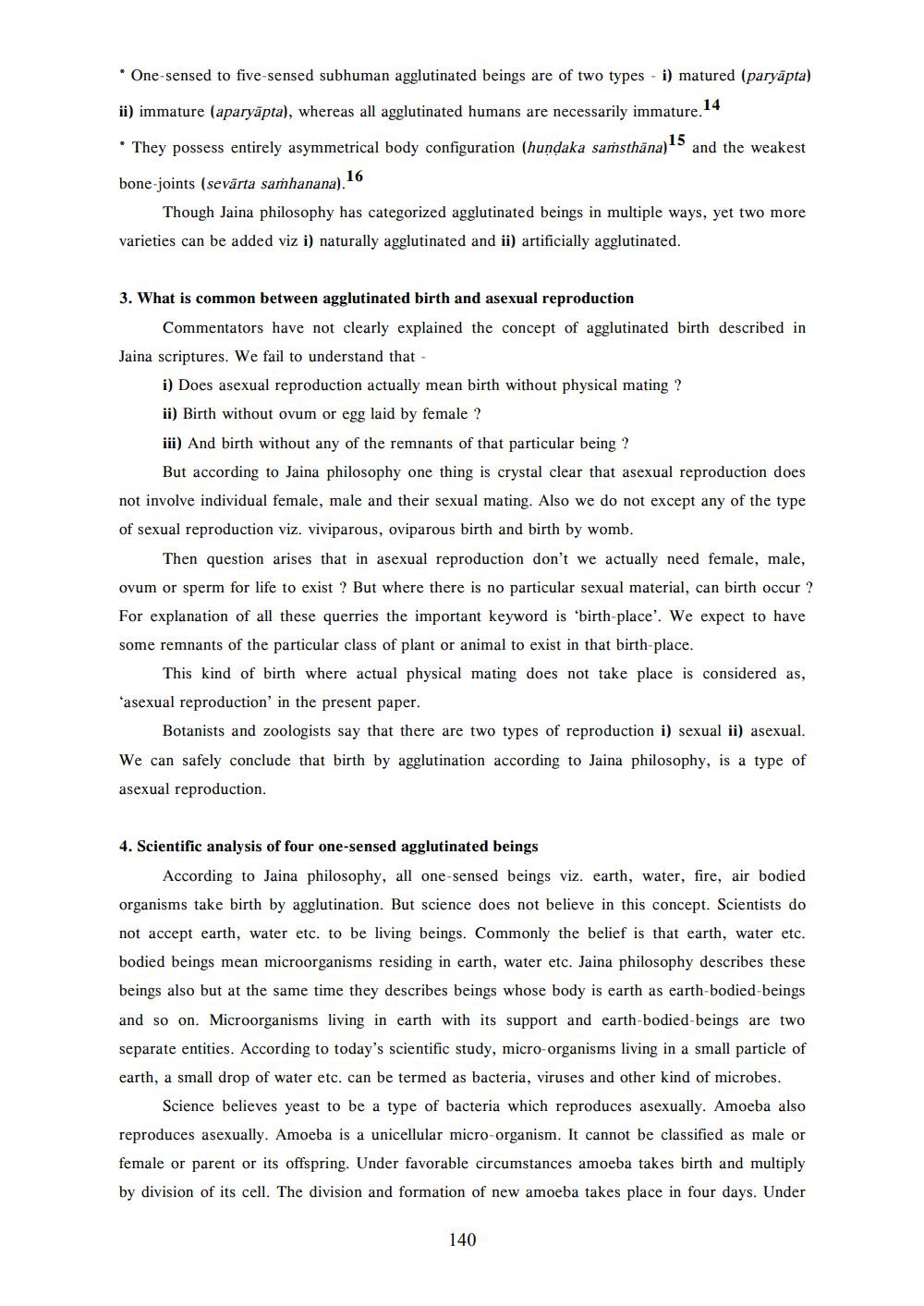________________
* One-sensed to five-sensed subhuman agglutinated beings are of two types - i) matured (paryāpta)
ii) immature (aparyāpta), whereas all agglutinated humans are necessarily immature.14
* They possess entirely asymmetrical body configuration (hundaka samsthāna)" and the weakest
bone-joints (sevārta samhanana).16
Though Jaina philosophy has categorized agglutinated beings in multiple ways, yet two more varieties can be added viz i) naturally agglutinated and ii) artificially agglutinated.
3. What is common between agglutinated birth and asexual reproduction
Commentators have not clearly explained the concept of agglutinated birth described in
Jaina scriptures. We fail to understand that
i) Does asexual reproduction actually mean birth without physical mating? ii) Birth without ovum or egg laid by female ? iii) And birth without any of the remnants of that particular being ?
But according to Jaina philosophy one thing is crystal clear that asexual reproduction does not involve individual female, male and their sexual mating. Also we do not except any of the type of sexual reproduction viz. viviparous, oviparous birth and birth by womb.
Then question arises that in asexual reproduction don't we actually need female, male, ovum or sperm for life to exist ? But where there is no particular sexual material, can birth occur? For explanation of all these querries the important keyword is 'birth-place'. We expect to have some remnants of the particular class of plant or animal to exist in that birth-place.
This kind of birth where actual physical mating does not take place is considered as, ‘asexual reproduction in the present paper.
Botanists and zoologists say that there are two types of reproduction i) sexual ii) asexual. We can safely conclude that birth by agglutination according to Jaina philosophy, is a type of asexual reproduction.
4. Scientific analysis of four one-sensed agglutinated beings
According to Jaina philosophy, all one-sensed beings viz. earth, water, fire, air bodied organisms take birth by agglutination. But science does not believe in this concept. Scientists do not accept earth, water etc. to be living beings. Commonly the belief is that earth, water etc. bodied beings mean microorganisms residing in earth, water etc. Jaina philosophy describes these beings also but at the same time they describes beings whose body is earth as earth-bodied-beings and so on. Microorganisms living in earth with its support and earth-bodied-beings are two separate entities. According to today's scientific study, micro-organisms living in a small particle of earth, a small drop of water etc. can be termed as bacteria, viruses and other kind of microbes.
Science believes yeast to be a type of bacteria which reproduces asexually. Amoeba also reproduces asexually. Amoeba is a unicellular micro-organism. It cannot be classified as male or female or parent or its offspring. Under favorable circumstances amoeba takes birth and multiply by division of its cell. The division and formation of new amoeba takes place in four days. Under
140




